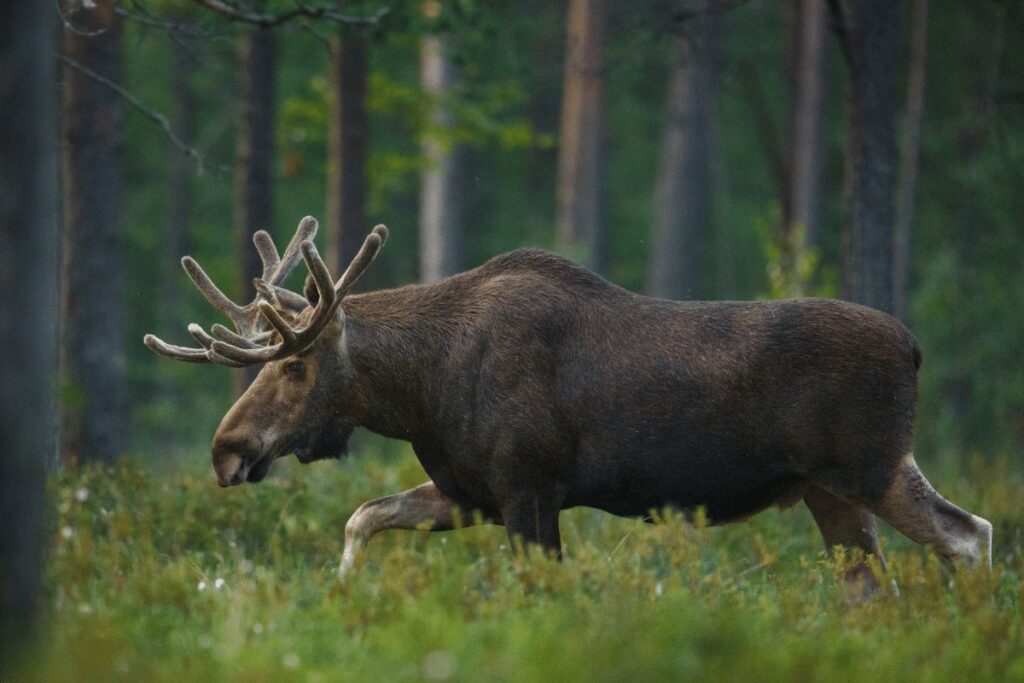Discover 11 animals in White Mountain National Forest from our camping adventures—wildlife and campgrounds revealed!
Picture this: you’re snuggled in your tent, and outside, the White Mountain National Forest is alive with the sounds of the wild.
Imagine waking up to a moose casually strolling by your campsite or spotting the stealthy black bear foraging through the forest floor.
That’s just a teaser of our camping escapades! We’ve encountered not one, not two, but eleven different wild neighbors while exploring this nature lover’s playground.
From sneaky raccoons to diving falcons, we’re here to take you through our ‘wild’ list, plus we’ll spill the beans on where we pitched our tents to be right in the middle of these amazing animal encounters!
Buckle up; it’s not just a camping trip—it’s a full-on wildlife safari!
Moose
These enormous creatures are a wonder to behold and can be seen throughout the forest, but there are a few spots where your chances of spotting one are particularly good.
One of the best places to see moose in the White Mountains is in the area surrounding the Zealand Falls Hut.
This area is home to a large population of moose, and they can often be seen grazing in the meadows and along the edges of the forest.
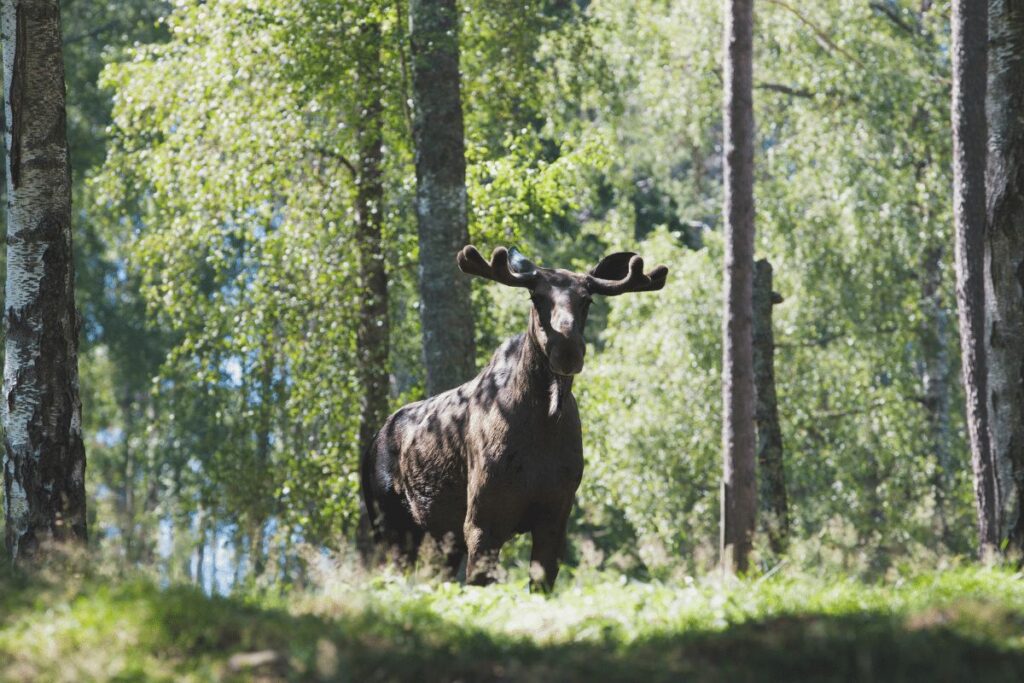
If you’re camping in the nearby Zealand Campground, you might just wake up to find a moose wandering through your campsite!
Another great spot to see moose in the White Mountains is in the area surrounding the Dry River Campground.
Moose are known to frequent the nearby ponds and streams, and you might catch a glimpse of one while hiking along the nearby trails or relaxing at your campsite.
Of course, seeing a moose in the wild is never guaranteed, but if you keep your eyes peeled and your ears open, you just might be lucky enough to spot one of these magnificent creatures during your visit to the White Mountain National Forest.
Just be sure to give them plenty of space and observe them from a safe distance, as they are powerful and unpredictable animals.
Black Bear
These magnificent creatures can be found throughout the forest, but there are a few spots where your chances of spotting one are particularly good.
One of the best places to see black bears in the White Mountains is in the remote wilderness areas, such as the Pemigewasset Wilderness or the Wild River Wilderness.
These areas provide plenty of natural habitat for the bears, and hikers might even come across a bear den or tracks along the trail.
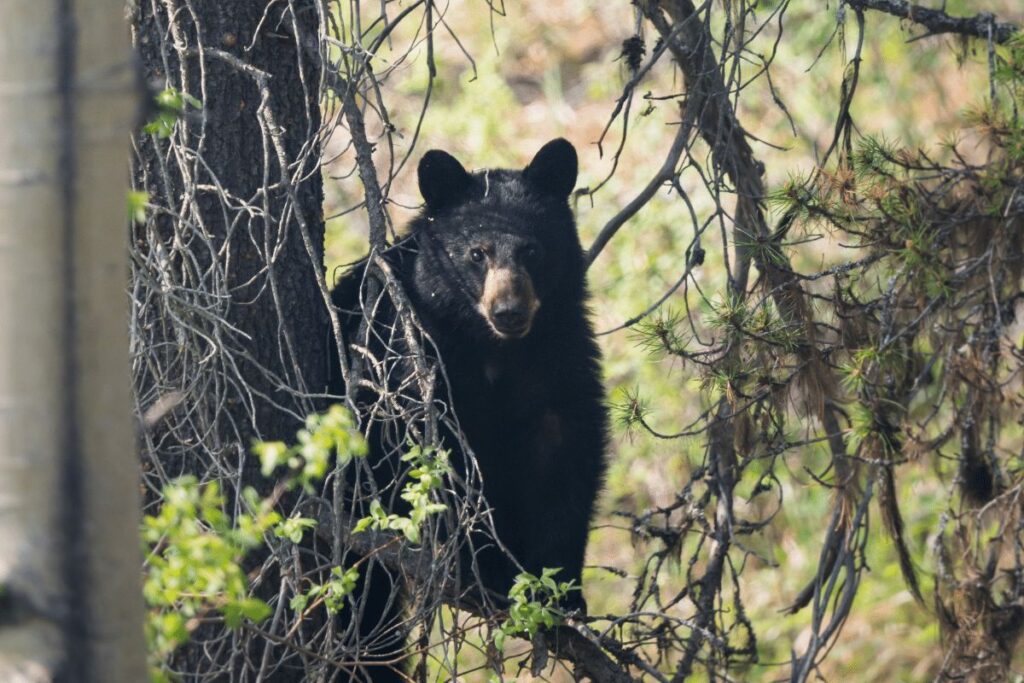
If you’re camping in the forest, there are a few campgrounds that are known for their bear activity. The Lafayette Campground, located in Franconia Notch State Park, is a popular spot for bear sightings.
The site is located near a natural feeding area for bears, so visitors should be prepared for possible encounters and take the necessary precautions to keep themselves and the bears safe.
Another campground where bear sightings are common is the Blackberry Crossing Campground in the Wild River area. This spot is known for its high bear activity, so visitors are advised to use bear-proof containers and to keep all food and trash securely stored.
Remember, black bears are wild animals and should be respected from a safe distance. If you do encounter a bear, remember to stay calm, avoid making sudden movements or loud noises, and back away slowly.
With a little bit of preparation and awareness, you can safely enjoy the beauty and wonder of these amazing creatures in the White Mountain National Forest.
Bicknell’s Thrush
Bicknell’s Thrush is a elusive bird that is only found in high mountain areas of the northeast United States and Canada. The highest populations are found in the White Mountains of New Hampshire. we were fortunate enough to spot one while hiking up Mt.Washington!
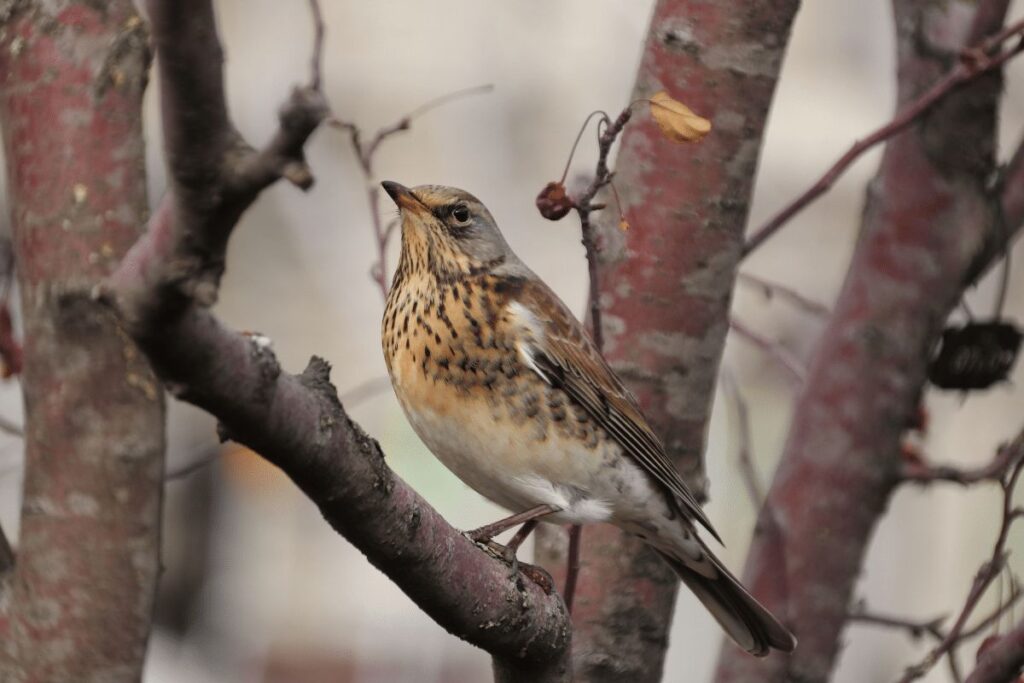
This small bird has a rusty brown back with darker streaks, light gray breast, and white belly. The throat and upper chest are rusty-orange. You can find them in spruce-fir forests near the treeline. They eat insects and berries. In the winter they travel to the Caribbean to escape the cold weather.
They are named after Spencer Fullerton Baird Bicknell who was an American ornithologist.
Raccoon
Raccoons are a common sight in the White Mountain National Forest, and they can be found throughout the forest, from the campgrounds to the trails. These curious and agile creatures are known for their distinctive black masks and ringed tails, making them easily recognizable.
While raccoons are generally harmless, they can be a nuisance in campgrounds if they get into your food or trash. To avoid attracting raccoons to your campsite, make sure to store all food and trash in bear-proof containers or hanging bags, and never feed the raccoons or other wildlife.
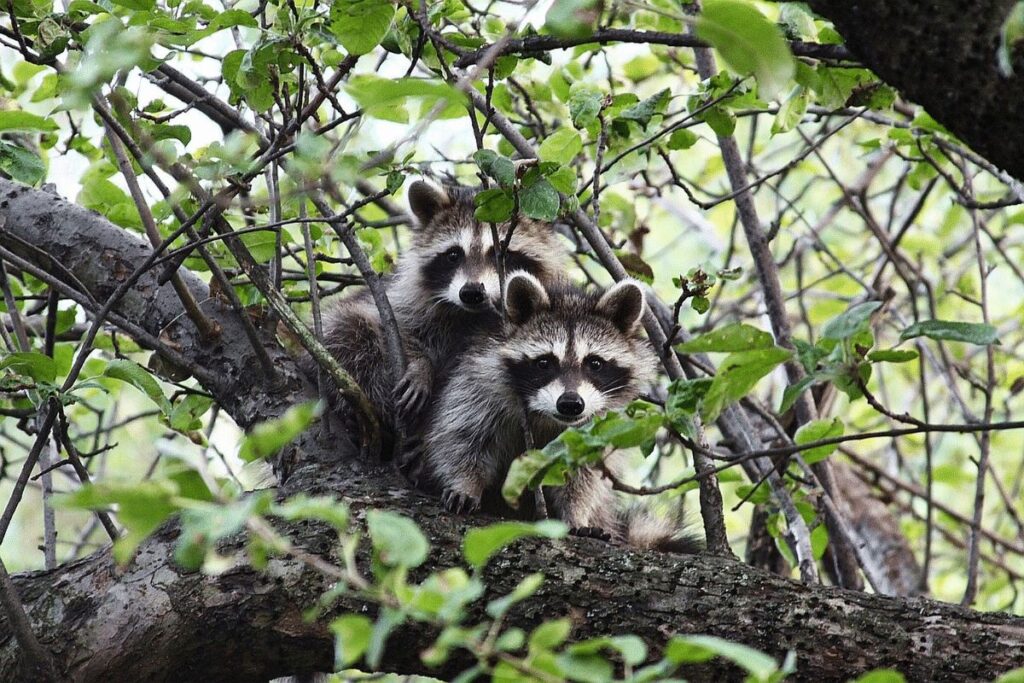
If you’re hiking in the forest, you might catch a glimpse of a raccoon along the trail. These nocturnal creatures are most active at night, but they can also be spotted during the day, especially near water sources.
One of the best places to see raccoons in the White Mountains is at the Dolly Copp Campground in the Pinkham Notch area. This campground is known for its high raccoon activity, so visitors should be extra vigilant about storing their food and trash properly.
Beavers
These large rodents are known for their impressive dam-building skills, which create vital wetland habitats for a variety of other species.
While beavers can be difficult to spot, there are a few places in the forest where your chances of seeing one are particularly good. One of the best places to see beavers in action is along the Kancamagus Highway, where the Swift River runs through a wide valley.
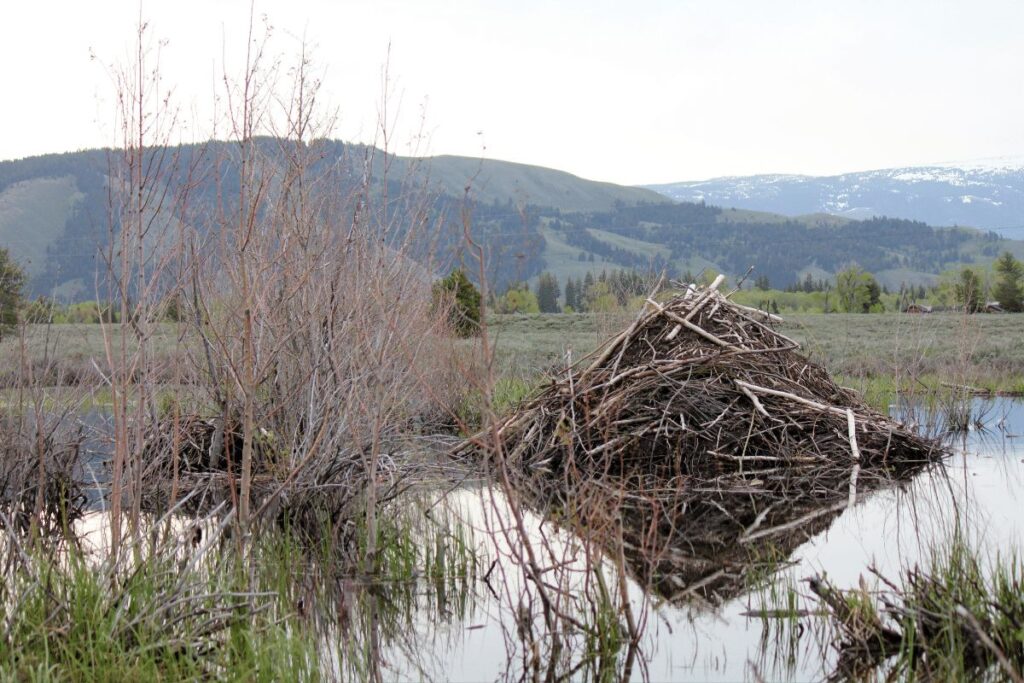
Visitors can often spot beaver dams and lodges along the riverbanks, and sometimes even catch a glimpse of the beavers themselves.
Another great spot to see beavers in the White Mountains is along the trails that run through the Pondicherry Wildlife Refuge. This area is home to several beaver ponds, which provide important habitat for a variety of water-loving species, including ducks, herons, and muskrats.
If you’re camping in the forest, keep an eye out for signs of beaver activity near streams or ponds. These may include chewed trees, mud and stick dams, and lodges made of branches and mud.
Beavers are a vital part of the White Mountain National Forest ecosystem, and their presence provides important benefits to many other species.
While they can be difficult to spot, taking the time to search for these amazing animals is a worthwhile endeavor that can deepen your appreciation for the natural beauty of the forest.
Great Horned Owl
With its distinctive tufted ears and piercing yellow eyes, the great horned owl is one of the most iconic birds of prey in the forest.
While these birds are nocturnal and can be difficult to spot during the day, there are a few places in the forest where your chances of seeing one are particularly good.
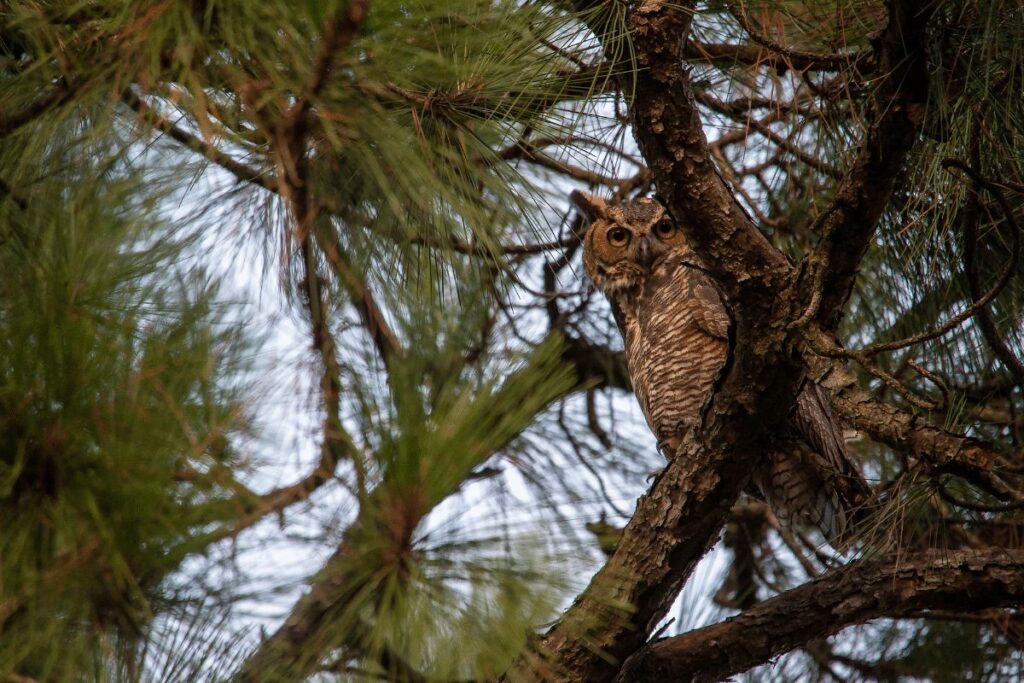
One of the best places to look for great horned owls is in the dense coniferous forests of the Pemigewasset Wilderness, where they often roost during the day.
Another good spot to look for great horned owls is along the forest’s many streams and rivers. These waterways provide vital habitat for the owls’ prey, including fish, frogs, and small mammals, making them a prime hunting ground for the birds.
If you’re camping in the forest, keep an ear out for the distinctive hooting call of the great horned owl at night. These calls can be quite eerie and haunting, but they’re also a sure sign that these amazing birds are nearby.
The great horned owl is a fascinating and awe-inspiring bird that is well worth searching for in the White Mountain National Forest. With a little bit of patience and some careful listening, you just might be rewarded with a glimpse of one of these magnificent creatures in action.
Coyotes
Coyotes are a common sight in the White Mountain National Forest, and these elusive predators can be found throughout the forest’s many ecosystems.
With their distinctive yipping calls and keen hunting skills, coyotes are a fascinating and important part of the forest’s diverse wildlife.
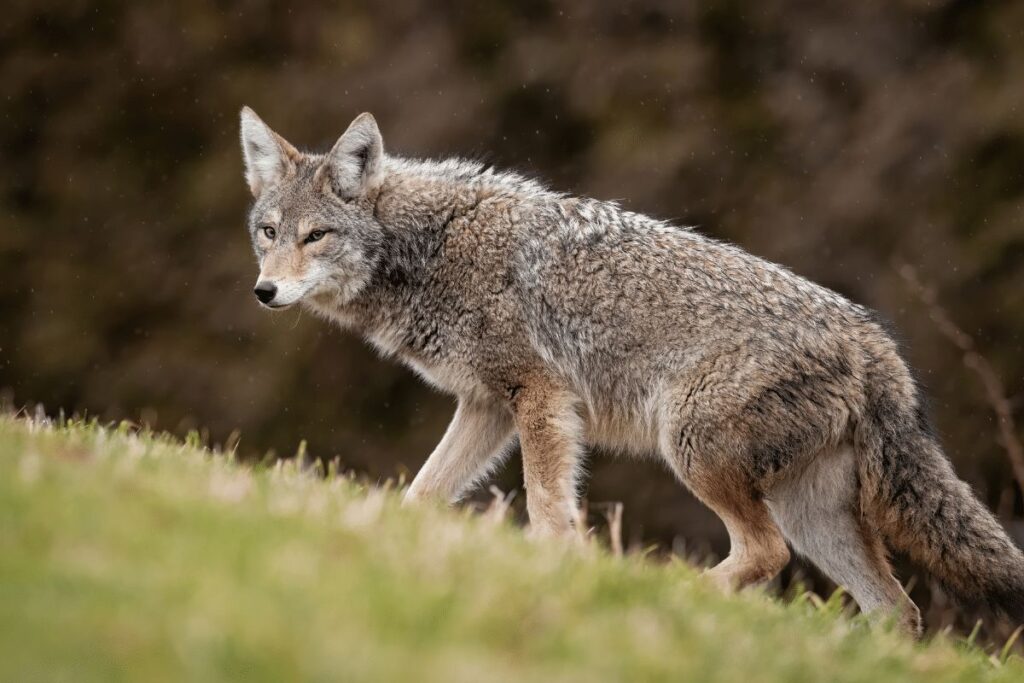
While coyotes are often most active at dawn and dusk, they can be spotted at any time of day, especially near their preferred hunting grounds. These can include open fields, forest clearings, and along the edges of streams and rivers.
One of the best places to look for coyotes in the White Mountains is in the forest’s more remote areas, such as the Great Gulf Wilderness or the Wild River Wilderness.
These areas offer excellent habitat for the animals, and visitors may be lucky enough to hear their haunting calls echoing through the woods at night.
Peregrine Falcon
With its sleek and powerful body, incredible speed, and sharp talons, the peregrine falcon is a true marvel of the sky.
While these birds can be difficult to spot, there are a few places in the forest where your chances of seeing one are particularly good.
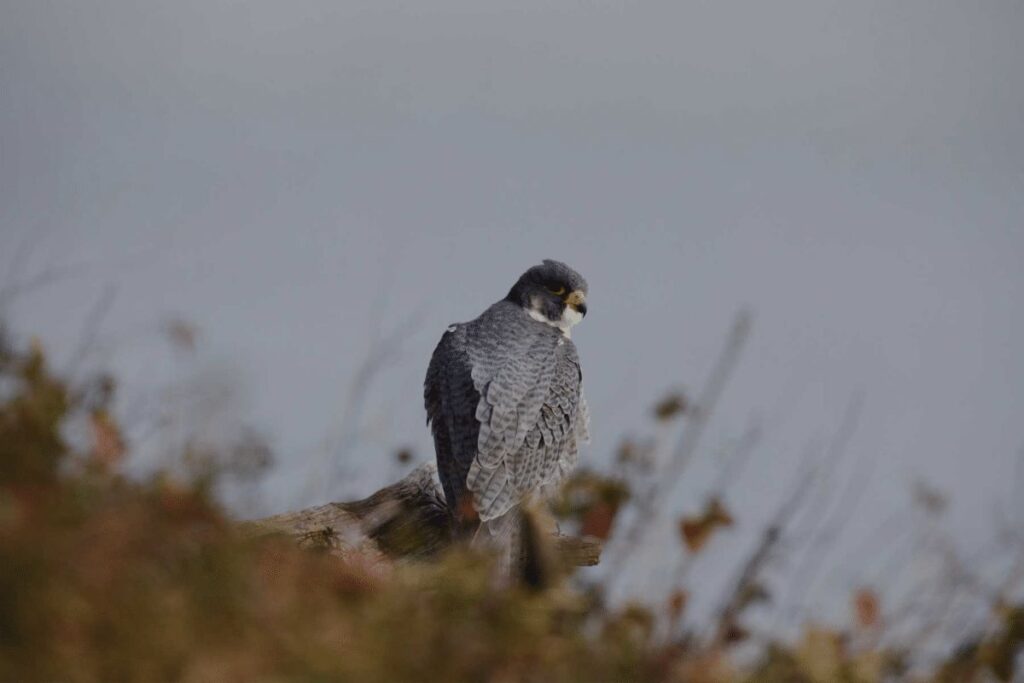
One of the best places to look for peregrine falcons is along the cliffs and rock faces of Cathedral Ledge in the Mount Washington Valley. Here, these birds nest and hunt among the crags, providing a breathtaking sight for visitors lucky enough to catch a glimpse.
Another good spot to look for peregrine falcons is along the Presidential Range, where these birds can often be seen soaring high above the peaks in search of prey.
Visitors to the forest’s many hiking trails may be lucky enough to see one of these majestic birds in action as they dive-bomb their prey at incredible speeds.
If you’re interested in learning more about peregrine falcons and their role in the White Mountain National Forest ecosystem, be sure to visit one of the forest’s many visitor centers or attend a ranger-led program.
These educational opportunities can provide a deeper understanding and appreciation of these incredible birds.
The peregrine falcon is a fascinating and awe-inspiring species that is well worth searching for in the White Mountain National Forest. With a little bit of luck and some careful observation, visitors can witness these amazing birds in action and gain a deeper appreciation for the natural beauty of the forest.
Canadian Lynx
The Canadian lynx is a wild cat that ranges across North America. They are about the size of a house cat and have long legs, large paws, and a short tail.
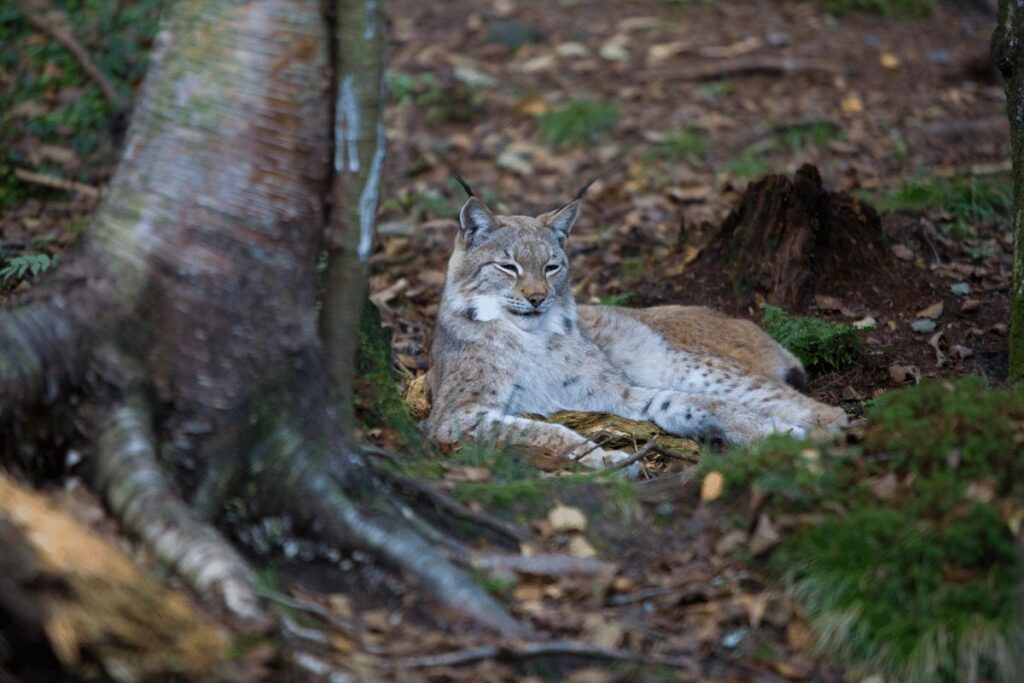
Lynx are shy and solitary animals that live in forests with dense cover of shrubs, small trees, and fallen logs. Diet consists mostly of hares but also includes mice, squirrels, grouse, and other birds.
In the White Mountain National Forest, you might see a Canadian lynx stalking its prey or searching for food in the deep snow. As you enjoy the beauty of this wilderness area, keep your eyes open for these secretive animals!
River otters
River otters are one of the most playful and entertaining animals to watch in the White Mountain National Forest. These sleek and agile creatures can be found throughout the forest’s many streams, rivers, and wetlands, where they hunt for fish, crustaceans, and other aquatic prey.
One of the best places to see river otters in the White Mountains is along the banks of the Ammonoosuc River, which flows through the heart of the forest.
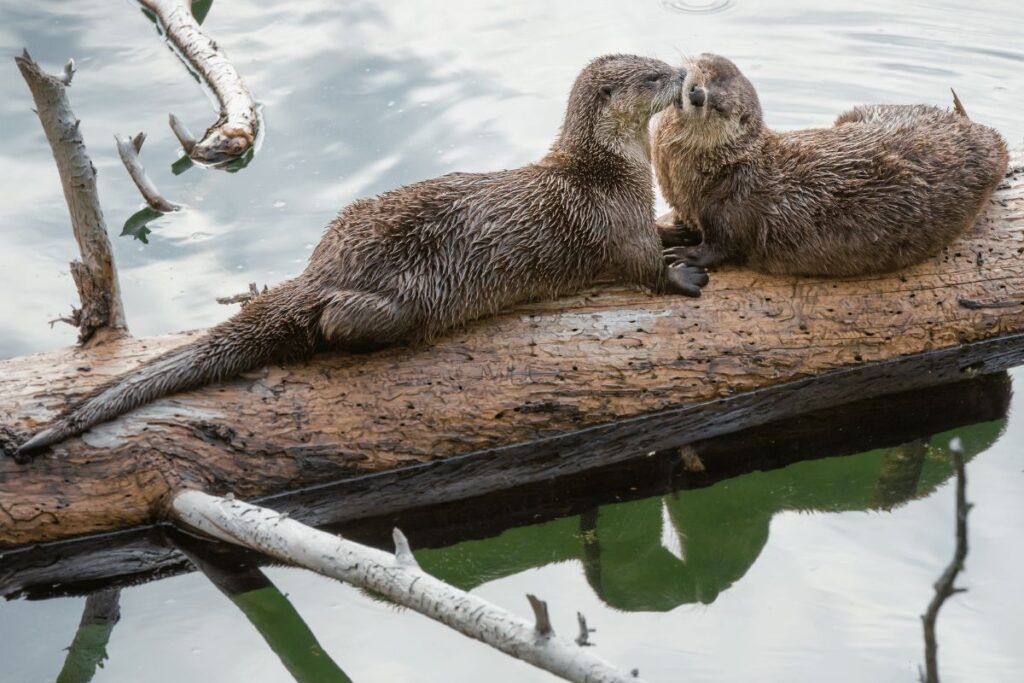
Visitors can watch as these curious creatures swim, dive, and frolic in the water, often playing with each other in displays of joyful exuberance.
Another good spot to look for river otters is in the forest’s many beaver ponds and wetlands. These habitats offer excellent feeding grounds for the animals, and visitors may be able to observe the otters as they hunt for fish and other prey.
If you’re camping in the forest, keep an eye out for signs of river otters, such as tracks or slides in the snow or mud. These animals are most active at dawn and dusk, so you may be able to catch a glimpse of them during these times.
River otters are a fascinating and entertaining species that add to the rich biodiversity of the White Mountain National Forest.
Whether you’re a nature lover, a photographer, or simply looking for a fun and unique outdoor experience, observing these playful creatures in their natural habitat is sure to be a highlight of your visit to the forest.
Bobcats
Bobcats are a fascinating and elusive species that can be found throughout the White Mountain National Forest. With their distinctive spotted coats, tufted ears, and short tails, these agile predators are a true symbol of the wildness and beauty of the forest.
While bobcats are notoriously difficult to spot, there are a few places in the forest where your chances of seeing one are particularly good.
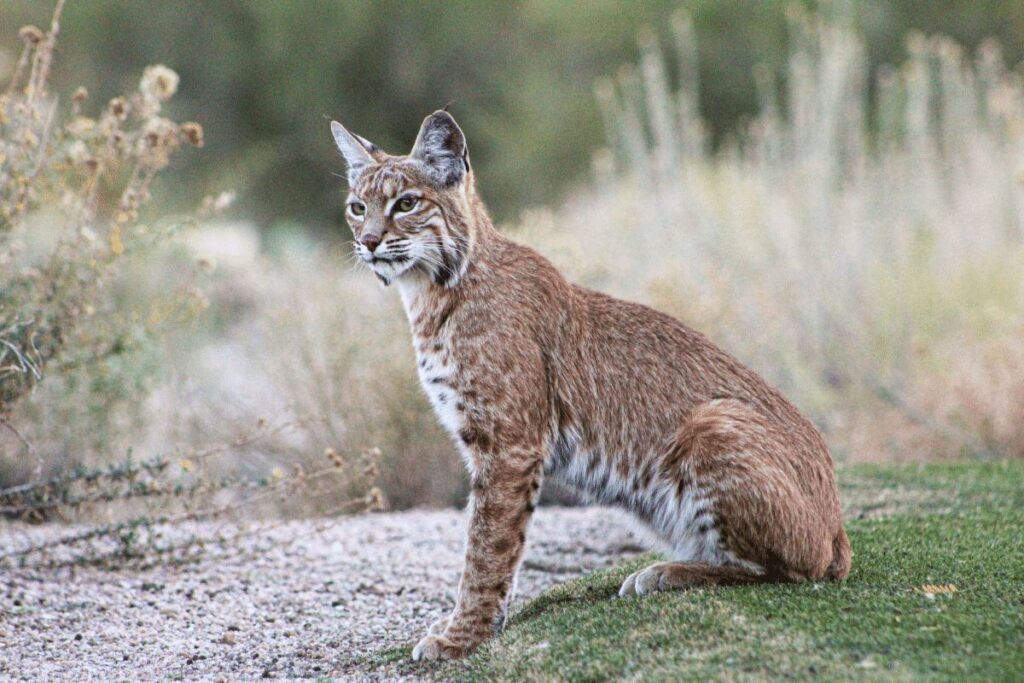
One of the best places to look for bobcats is in the forest’s more remote areas, such as the Wild River Wilderness or the Great Gulf Wilderness. These areas offer excellent habitat for the animals, with plenty of cover and prey available.
Visitors to the forest’s many hiking trails may also be lucky enough to catch a glimpse of a bobcat as it moves through the forest. These animals are most active at dawn and dusk, so hikers should be alert and keep a safe distance if they do spot one.
If you’re camping in the forest, be sure to store all food and trash properly, as bobcats are opportunistic feeders and may be attracted to campsites with easily accessible food. Visitors should also be aware that bobcats are wild animals and should be treated with respect and caution.
Bobcats are a fascinating and important part of the White Mountain National Forest ecosystem, and observing them in the wild can be a thrilling and unforgettable experience. Just be sure to keep a safe distance and enjoy these amazing animals from afar.
Minks
Minks are sleek and agile creatures that can be found throughout the White Mountain National Forest.
With their long, slender bodies, sharp claws, and keen senses, these predators are perfectly adapted to life in the forest’s many streams, rivers, and wetlands.
While minks are notoriously difficult to spot, visitors to the forest can often see signs of their presence, such as tracks, scat, or partially eaten prey.
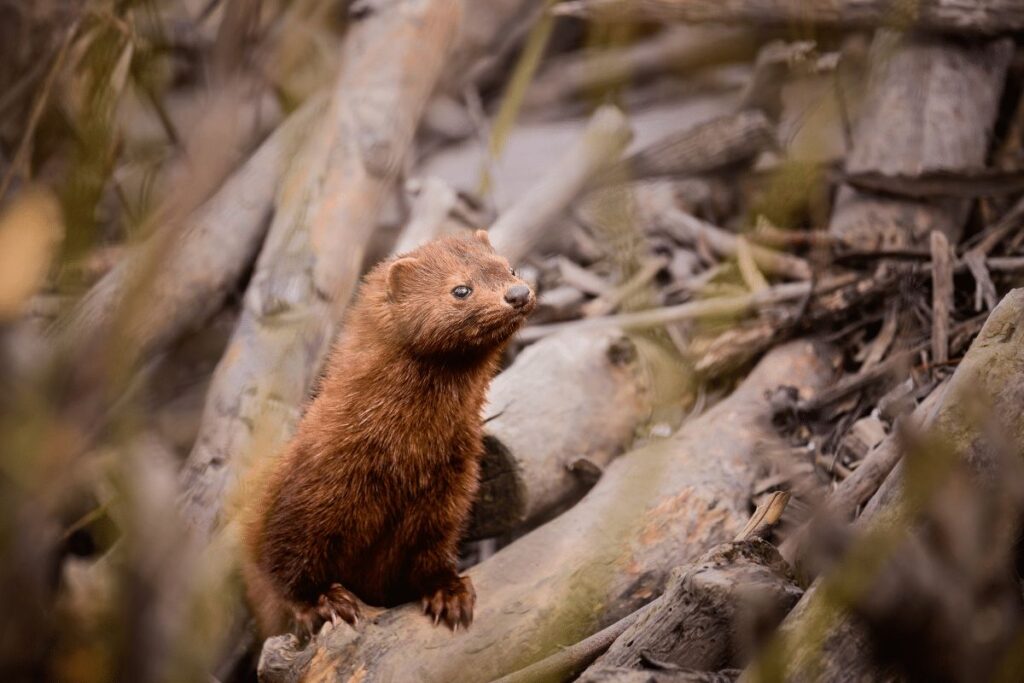
Minks are skilled hunters, feeding on a variety of aquatic and terrestrial prey, including fish, crustaceans, rodents, and birds.
One of the best places to look for minks in the White Mountains is along the banks of the Swift River, which flows through the heart of the forest.
Visitors can watch as these agile creatures hunt for fish and other prey, often using their powerful jaws and sharp claws to subdue their quarry.
Another good spot to look for minks is in the forest’s many wetlands and beaver ponds. These areas offer excellent feeding grounds for the animals, and visitors may be able to observe the minks as they hunt for food.
Minks are a fascinating and important part of the White Mountain National Forest ecosystem.
While they may be difficult to spot, observing their tracks and signs can be a rewarding and exciting experience for nature lovers and outdoor enthusiasts alike. Just be sure to keep a safe distance and respect these wild animals in their natural habitat.
Campgrounds in White Mountains National Forest
The White Mountains National Forest is a popular destination for outdoor enthusiasts, and for good reason. With its stunning scenery, abundant wildlife, and numerous recreational opportunities, the forest offers something for everyone.
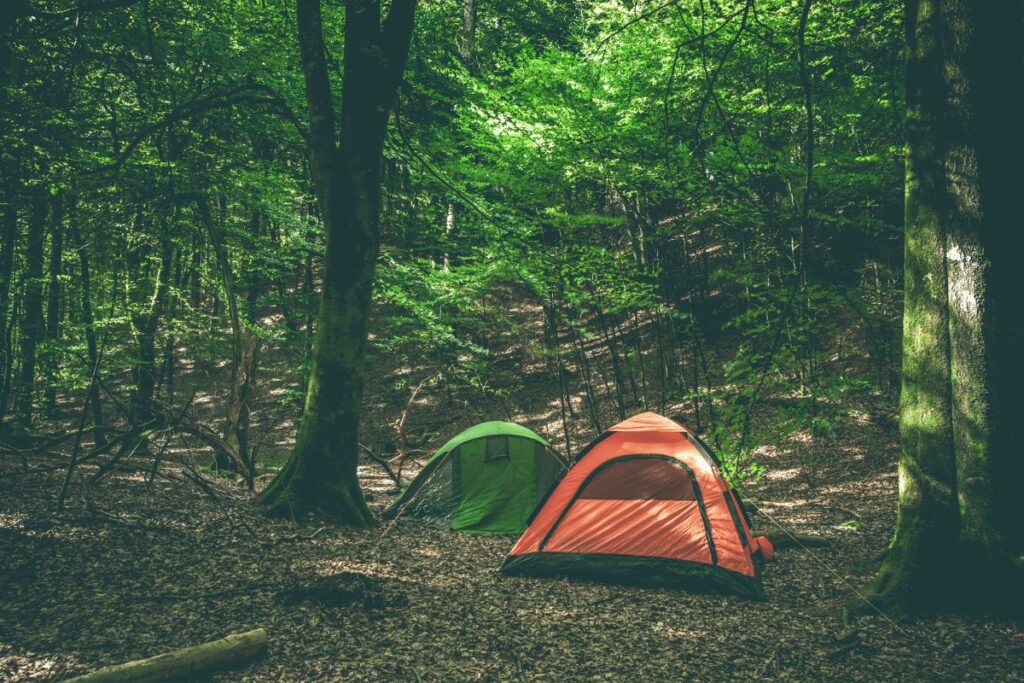
One of the best ways to experience the forest is by camping, and luckily, there are many campgrounds to choose from. In this blog post, we’ll explore some of the best campgrounds in the White Mountains National Forest.
Blackberry Crossing Campground
Located in the heart of the forest, Blackberry Crossing Campground is a small, primitive campground that offers a true wilderness experience.
The campground is situated on the banks of the Wild Ammonoosuc River and offers excellent fishing and hiking opportunities. There are 26 sites available, so reservations are recommended.
Covered Bridge Campground
Covered Bridge Campground is a family-friendly campground located in the scenic town of Woodstock.
The campground offers a variety of amenities, including showers, flush toilets, and a playground. Located along the Kancamagus Scenic Byway this 49 site campground awaits you.
Hancock Campground
Hancock Campground is a small, primitive campground located in the beautiful Kancamagus Highway region of the forest.
The campground offers eight sites and is located near several popular hiking trails, including the Hancock Loop Trail and the Greeley Ponds Trail.
The campground is first-come, first-served, and there are no amenities available. Hancock Campground has 56 wooded sites.
Jigger Johnson Campground
Jigger Johnson Campground is a family-friendly campground located near the popular town of North Conway. The campground offers a variety of amenities, including showers, flush toilets, and a dump station.
The campground is located near several popular attractions, including the Conway Scenic Railroad and the Settlers Green Outlet Village.
Jigger Johnson Campground is located in the center of the Kancamagus Highway, 12.5 miles miles west of Conway NH. Jigger Johnson Campground offers 75 camp sites. Sites 1-9 are tent only.
Lost River Valley Campground
Lost River Valley Campground is a family-friendly campground located near the beautiful Lost River Gorge and Boulder Caves. The campground offers a variety of amenities, including showers, flush toilets, and a playground. The campground offers 150+ spacious wooded sites.
Many sites are located feet from the water. No matter what type of camping: tenting, trailers, camping cabins or glamping cabins, the soothing sound of the river will surely put you at ease and everlasting memories will be created.
Russell Pond Campground
Russell Pond Campground is a primitive campground located in the beautiful Pemigewasset Wilderness.
The campground is only accessible by hiking or canoeing and offers a true wilderness experience. Campground’s 86 campsites are tucked into the hillside overlooking Russell Pond, a popular boating and fishing site.
Zealand Campground
Zealand Campground is a primitive campground located in the heart of the White Mountains National Forest.
The campground offers 12 sites and is situated near several popular hiking trails, including the Zealand Trail, which leads to Zealand Falls and Zealand Notch.
The campground is first-come, first-served, and there are no amenities available, so visitors should come prepared with their own water and supplies. However, the campground does offer vault toilets and a picnic area. Each site also has a fire ring and picnic table.
One of the highlights of camping at Zealand Campground is the opportunity to experience the natural beauty of the White Mountains National Forest. The campground is situated near several streams and rivers, making it a popular destination for fishing and swimming. Visitors can also explore the nearby hiking trails and take in stunning views of the surrounding mountains.
While the campground is primitive, it offers a true wilderness experience and is ideal for those looking to disconnect from technology and immerse themselves in nature.
Just be sure to pack out all trash and leave the campsite as you found it to help preserve this beautiful area for future generations to enjoy.
Lafayette Place Campground
Lafayette Place Campground, nestled in the heart of Franconia Notch State Park, is the ultimate camping and hiking hub for visitors to the area. Whether you’re a hiking enthusiast, avid angler, or simply seeking an escape to the great outdoors, this campground offers the perfect base from which to explore the White Mountains.
At the campground entrance, visitors can find a cabin offering information on hiking trails, safety tips, and the natural and cultural history of the park. A lodge also houses a registration desk and offers camping supplies for those in need.
Each of the 97 wooded tent sites offers a tranquil and private camping experience, complete with a picnic table, car parking, and an open fireplace for cooking up a delicious meal under the stars.
For those looking to freshen up after a day of hiking or swimming, there are coin-operated showers available, and a camp store for any last-minute essentials.
With 88 sites available by reservation, 1 for youth group reservations, and 7 for first-come, first-served campers, Lafayette Place Campground caters to a range of visitors.
During the off-season, the campground offers self-service and self-pay camping with limited staffing and facilities, allowing visitors to enjoy the area’s natural beauty in a more secluded and peaceful setting.
From breathtaking hikes to swimming in cool mountain streams, Lafayette Place Campground offers the perfect combination of recreation and relaxation for a memorable camping experience in Franconia
Conclusion
What a wonderful adventure it was to go camping in the White Mountain National Forest. We had an amazing time exploring the area and seeing all of the unique animals we could find there.
From majestic moose to exotic eagles, our days were filled with spectacular sights and memorable experiences that will stay with us for years to come. If you ever get a chance to explore this beautiful park, make sure you take your binoculars – you never know what special wildlife awaits!

